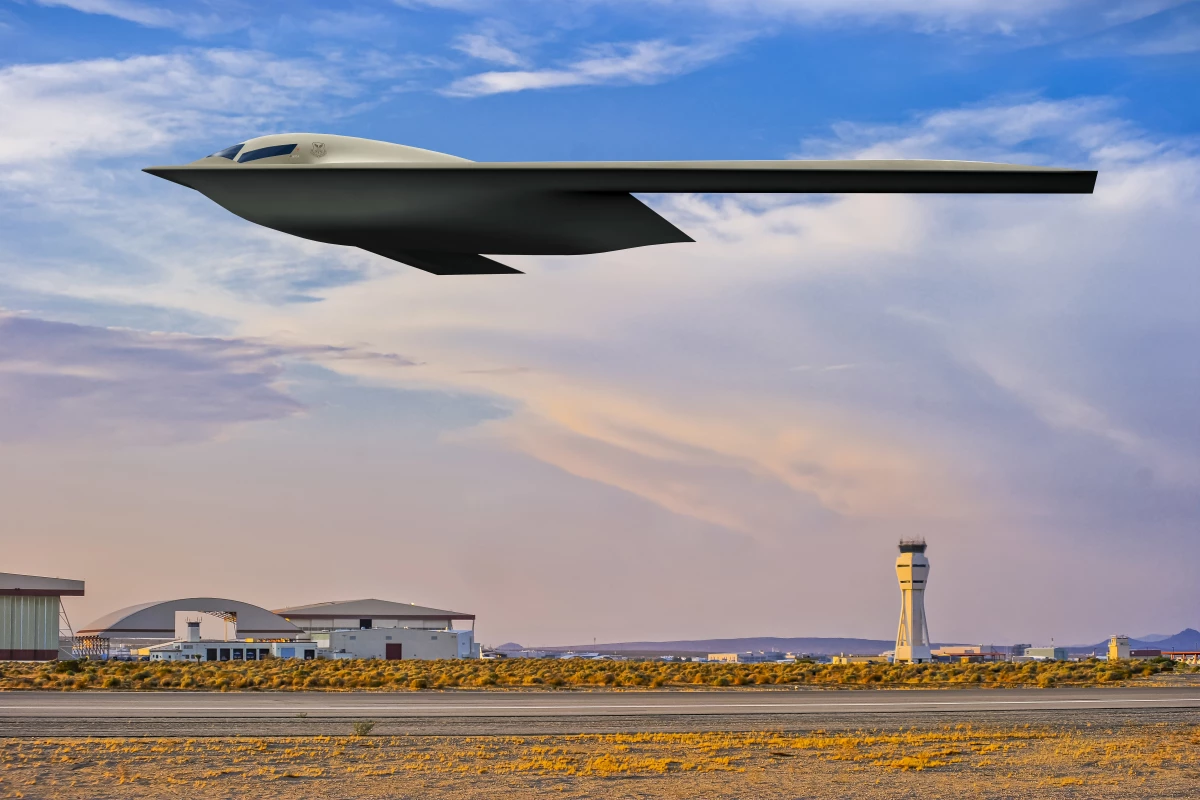The US Air Force has released a new digital rendering of its B-21 Raider heavy strategic nuclear bomber, along with more information about the warplane. It's being built by Northrop Grumman as part of the Air Force's Long-Range Strike Bomber program to modernize one leg of the US nuclear deterrence triad, which consists of bombers, land-based missiles, and submarine-based missiles.
The latest rendering not only features an updated version of the delta-winged stealth bomber, but also has Edwards Air Force Base, California in the background, where the 420th Flight Test Squadron is tasked with planning, testing, analysis, and reporting on the flight and ground testing of the B-21.
The B-21 has passed its critical design review and is currently in the Engineering and Manufacturing Development phase. This phase deals not only with the aircraft proper, but also with the related manufacturing infrastructure and the industrial supply chain.
Scheduled to enter service by 2027, the B-21 Raider is designed to operate alongside the B-52 Stratofortress, the B-1 Lancer, and the B-2 Spirit bombers. As the B-21 fleet grows to its anticipated size of over 100 airframes, it will replace the B-1 and the B-2, and also the B-52 if the advanced life extension program is not undertaken.
The B-21 is designed as a dual-capable penetrating strike stealth bomber that can carry both conventional and nuclear weapons in stand-off and direct attack versions. Along with the Raider, the Long-Range Strike program will also include the development of intelligence, surveillance and reconnaissance, electronic attack, communications, and other capabilities. In addition, it will be able to operate with or without a crew, depending on the mission, and has an easily upgradable open-architecture.
Under development since 2015, the B-21 is being built by Northrop Grumman with subcontracts by Pratt & Whitney, Janicki Industries, Collins Aerospace, GKN Aerospace, BAE Systems, and Spirit Aerosystems.
Costing US$639 million each in 2019 dollars, the Raider is named after the Doolittle Raiders, who were a US Army Air Force unit that carried out the Tokyo Raid on April 18, 1942. The raid consisted of 16 B-25 Mitchell medium bombers launched from an aircraft carrier, and dropped the first bombs on the seemingly unreachable Japanese mainland, forcing the Japanese to recall troops and planes for homeland defense.
The first B-21 operational base, Ellsworth AFB, South Dakota, will act as the Formal Training Unit. Other main bases will include Whiteman Air Force Base, Missouri; and Dyess Air Force Base, Texas. In a congressional hearing in June 2021, acting Air Force Assistant Secretary of the Air Force Acquisition, Technology & Logistics, Darlene Costello, said that two prototypes have already been completed and are undergoing testing.
"Nuclear modernization is a top priority for the Department of Defense and the Air Force, and B-21 is key to that plan," says Randall Walden, Air Force Rapid Capabilities Office director. "The built-in feature of open systems architecture on the B-21 makes the bomber effective as the threat environment evolves. This aircraft design approach sets the nation on the right path to ensuring America’s enduring airpower capability."
Source: US Air Force





